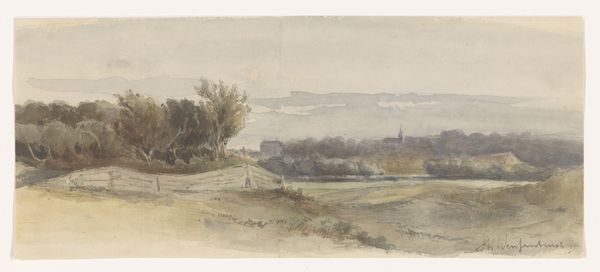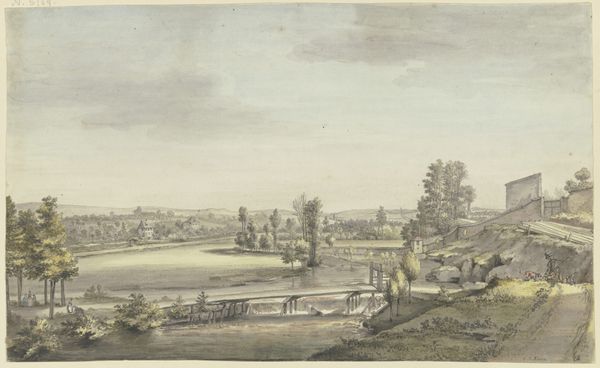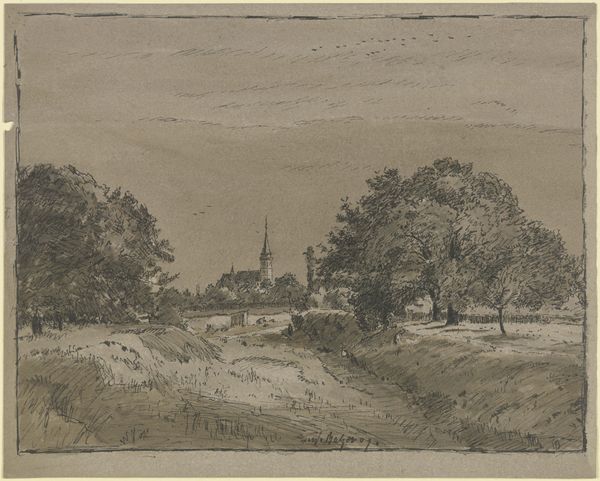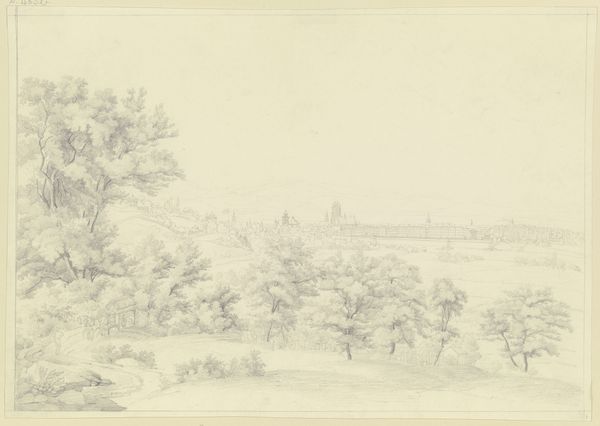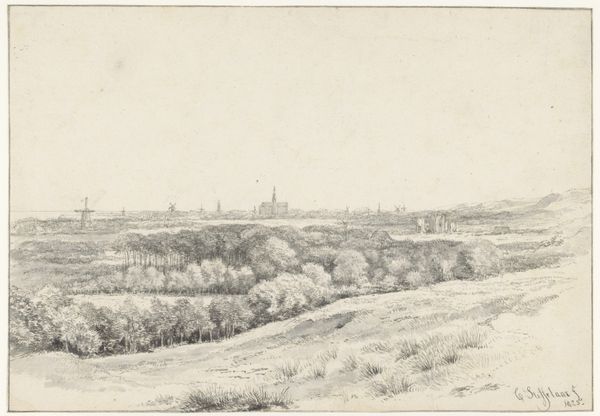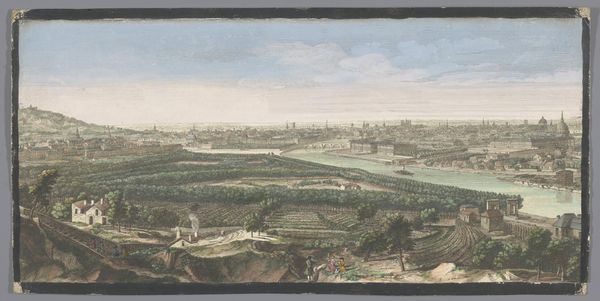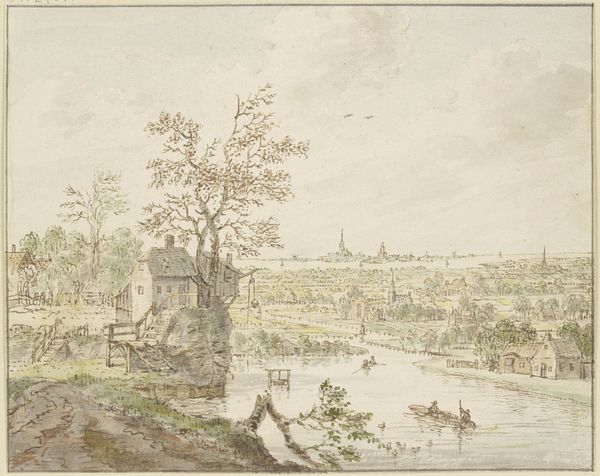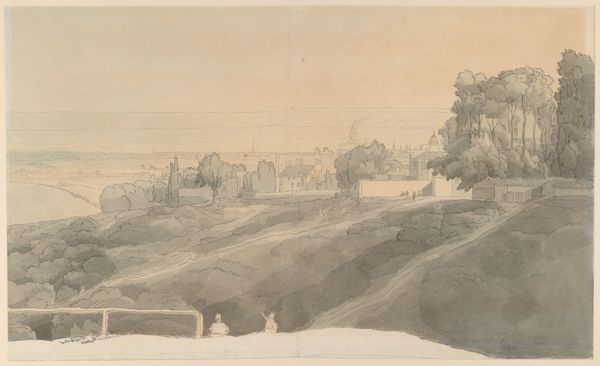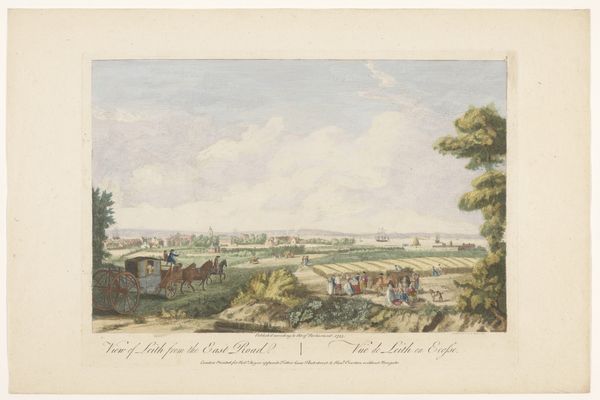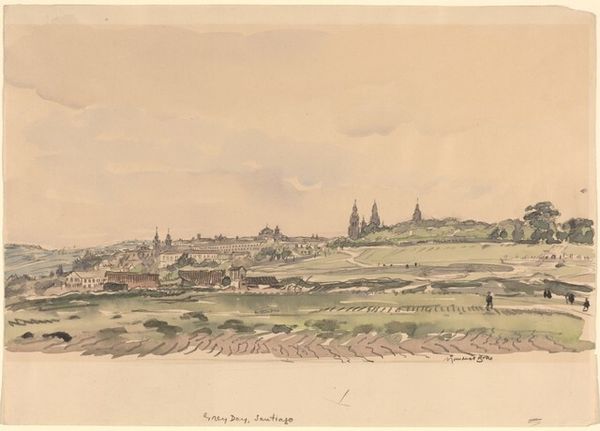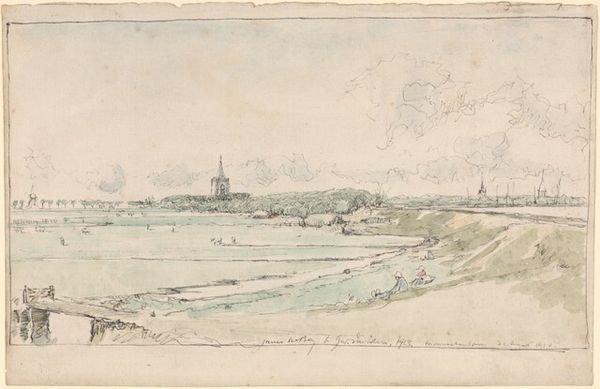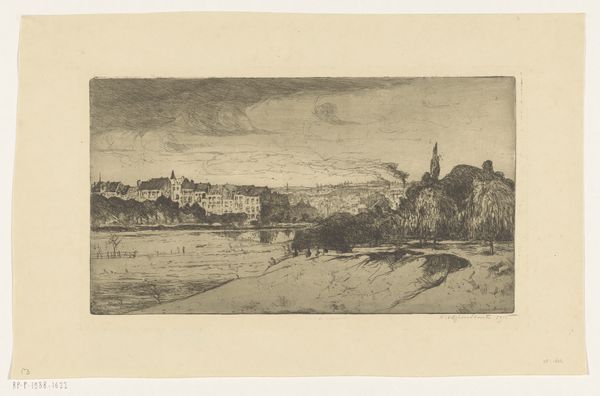
Copyright: Public Domain
Editor: Here we have Carl Morgenstern's "View of Frankfurt on the Main," created in 1889 using ink and watercolor. It's quite serene, almost muted. I'm intrigued by how the city seems so distant, viewed through the landscape. What do you see in this piece? Curator: It’s fascinating to consider this landscape through a materialist lens. The "plein-air" tag is crucial. Think about Morgenstern physically being there, the act of production becoming intimately tied to the social context of the scene. The watercolor and ink were commodities themselves. What kind of labor went into their creation? And for whom was this view ultimately intended? Editor: So, it’s not just a pretty picture; you're asking about the economic reality of making art and its place in society at the time? Curator: Precisely. The drawing implies leisure, but its existence depended upon specific means of production and systems of patronage or consumption. The artwork’s materiality – ink, watercolor, paper – connect it to broader networks of trade and industry. How did this tranquil view fit into the booming industrial context of Frankfurt at the time? Were the materials readily available or expensive, indicating the status of the commissioner or the artist? Editor: That perspective really changes how I see the artwork. It’s less about romantic escapism and more about understanding its material roots and the societal factors that enabled its creation. I wonder what type of paper he employed here... Curator: Exactly. The materials ground us in reality and bring us away from focusing on solely subjective interpretations. Editor: I see that, and I think next time I am more sensitive to these underlying aspects, looking more to the process and surrounding factors! Curator: That’s an excellent starting point. Keep questioning the materials and production, and you'll always find a richer story.
Comments
No comments
Be the first to comment and join the conversation on the ultimate creative platform.
